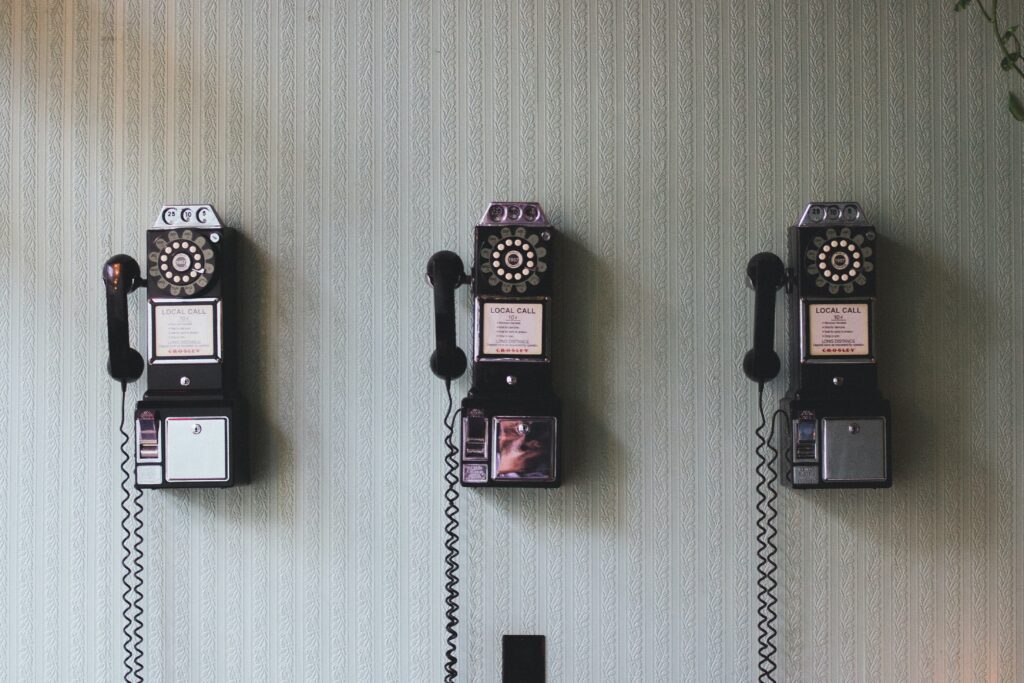
Imagine this scenario: you’re excitedly getting ready for a date with someone you’re really interested in. You’ve thought about what to wear, where to go, and even rehearsed some conversation topics in your head. But as much as you may have prepared, there’s one crucial aspect of dating that often goes overlooked: communication styles. Yes, those little quirks and preferences that we all have when it comes to expressing ourselves can make or break a potential connection. In this article, we’ll explore the ins and outs of handling different communication styles in dating, equipping you with the tools to navigate these tricky waters with finesse and confidence.
No two individuals communicate in exactly the same way, and that’s what makes dating, and human interaction in general, so endlessly fascinating. From subtle gestures to nuanced verbal cues, the way we express ourselves can reflect our personality traits, upbringing, and even cultural background. But fear not, for understanding, adapting to, and ultimately embracing these differences is the key to building a strong foundation for a healthy and fulfilling relationship. Join us as we delve deeper into the world of communication styles in dating, and discover how you can bridge any gaps and create meaningful connections, one conversation at a time. So, put on your listening ears and get ready to take some notes, because this is your comprehensive guide to handling different communication styles in the dating realm.
Learn How to Get Ready For your Date Right Here!
Understanding Different Communication Styles
What are communication styles?
Communication styles refer to the different ways individuals express themselves, exchange information, and interact with others. It encompasses verbal and non-verbal cues, tone of voice, listening skills, and overall approach to communication. Each person has their unique communication style, shaped by various factors such as upbringing, personality traits, and cultural background.
Why do communication styles matter in dating?
Communication styles play a crucial role in dating because they affect how well partners understand and connect with each other. Miscommunication or misunderstandings due to contrasting styles can lead to conflicts and frustrations, negatively impacting the relationship. Understanding and adapting to each other’s communication styles is essential for healthy and effective communication, building trust, and fostering deeper connections.
Identifying your own communication style
To navigate different communication styles, the first step is understanding your own style of communication. Take some time to reflect on how you express yourself and interact with others. Are you direct or more subtle in your communication? Do you tend to be more talkative or a better listener? Understanding your tendencies and preferences can help you communicate more effectively and be aware of potential differences with your partner.
Understanding your partner’s communication style
Equally important is gaining insight into your partner’s communication style. Observe how they express themselves, respond to conflicts, and convey emotions. Are they more direct or indirect in their communication? Do they prefer detailed explanations or brief, to-the-point conversations? By understanding their style, you can adapt your approach and find common ground in your interactions.
Effective Communication Strategies
Active listening
One of the most essential communication strategies is active listening. Practice giving your full attention to your partner when they are speaking, focusing on understanding their perspective rather than planning your response. Maintain eye contact, nod to show understanding, and ask clarifying questions if needed. Listening actively can foster understanding and strengthen the bond between you and your partner.
Non-verbal communication
Non-verbal cues can often convey more meaning than words alone. Pay attention to your partner’s body language, facial expressions, and gestures. Likewise, be mindful of your own non-verbal communication, as it can either enhance or contradict your verbal messages. Maintaining open and inviting body language, such as maintaining eye contact and uncrossing your arms, can create a more comfortable and supportive environment for communication.
Using clear and concise language
Using clear and concise language is essential for effective communication. Be mindful of expressing your thoughts and feelings in a way that is easily understandable to your partner. Avoid using jargon or unnecessarily complex words that may confuse or alienate them. Strive for clarity and simplicity in your language to ensure your message is received accurately.
Being mindful of your tone
The tone of your voice can greatly impact the way your message is perceived. Be mindful of the tone you use when speaking with your partner. Speak calmly and respectfully, even during disagreements. Avoid raising your voice or using aggressive language that may escalate conflicts. By maintaining a friendly and positive tone, you can create a more harmonious and conducive atmosphere for communication.
Giving and receiving feedback
Feedback is an essential component of effective communication. Be open to providing constructive feedback to your partner, focusing on specific behaviors or actions rather than attacking their character. Similarly, be receptive to receiving feedback from your partner in a non-defensive manner. Constructive feedback allows for personal growth and can improve the quality of communication within your relationship.

Learn How to Get Ready For your Date Right Here!
Importance of Empathy and Understanding
Practicing empathy
Empathy is the ability to understand and share the feelings of another person. In relationships, empathy plays a crucial role in effective communication. It allows you to connect with your partner on a deeper level, showing that you value their perspective and emotions. Practice putting yourself in their shoes, actively listening to their experiences, and validating their feelings. Empathy creates a safe and supportive environment that fosters open and honest communication.
Considering cultural differences
Cultural differences can significantly affect communication styles. Be aware of your partner’s cultural background and how it may influence their communication preferences. Different cultures may have varying expectations regarding directness, emotional expression, and conflict resolution. By considering these differences and being respectful of their cultural values, you can bridge communication gaps and build a stronger connection.
Avoiding judgment
Judgment can hinder effective communication. It creates a barrier between you and your partner, preventing open and honest dialogue. When engaging in communication, strive to suspend judgment and approach conversations with an open mind. Be curious and genuinely interested in understanding their perspective, even if it differs from yours. By avoiding judgment, you create an environment that encourages mutual respect and understanding.
Seeking mutual understanding
Seeking mutual understanding should be the goal of every communication exchange. Instead of focusing solely on getting your point across, prioritize understanding your partner’s viewpoint. Ask open-ended questions to gain more insight and actively listen to their responses. Validation and empathy can go a long way in fostering understanding and strengthening your connection.
Building Trust and Openness
Establishing trust in communication
Trust forms the foundation of any healthy relationship, including the communication aspect. Building trust involves being honest, reliable, and consistent in your communication efforts. Follow through on your promises, maintain confidentiality, and be transparent in expressing your thoughts and feelings. Trust creates an environment where both partners feel safe to share openly and honestly without fear of judgment or betrayal.
Creating a safe and non-judgmental space
Creating a safe and non-judgmental space is crucial for fostering open communication. Ensure that conversations are conducted respectfully, without criticism or blame. Encourage your partner to express their thoughts and emotions freely without fear of repercussions. By fostering a receptive and understanding environment, you can nurture open and authentic dialogue.
Encouraging open and honest conversations
Encourage open and honest conversations with your partner. Express the importance of open communication and invite them to share their feelings and thoughts openly. Promote a mindset that values vulnerability and authenticity. By creating a culture of open communication, you can establish a strong emotional connection and maintain a healthy relationship.
Expressing vulnerability
Vulnerability is a powerful tool in building trust and deepening intimacy. Share your true thoughts, emotions, and experiences with your partner. Be open about your fears, dreams, and insecurities. Expressing vulnerability allows your partner to know you on a deeper level and encourages them to reciprocate, enhancing the emotional connection between you.

Navigating Different Communication Styles
Recognizing differences in directness
Different individuals have varying levels of directness in their communication. Some people may prefer clear and straightforward conversations, while others may be more subtle or indirect. Recognize these differences in directness and adapt your communication style accordingly. Be patient with your partner’s preferred level of directness and strive to find a middle ground that accommodates both styles.
Understanding different conversational approaches
Conversational approaches can also differ between individuals. Some may value lengthy, detailed conversations, while others prefer brief and concise exchanges. Understanding these differences can help you adjust your communication style and ensure both partners feel heard and understood. Strive to maintain a balance between providing enough information and not overwhelming your partner.
Managing differences in conflict resolution styles
Conflict resolution styles can greatly impact communication during disagreements. Some individuals may prefer immediate resolution, while others may need time to reflect before addressing conflicts. Honor these differences and be patient with your partner’s approach. Strive to find common ground and mutually agreeable methods of resolving conflicts that respect both styles.
Addressing differences in frequency and mode of communication
Differences in communication frequency and preferred modes can impact relationship dynamics. Some individuals may prefer frequent communication, while others may appreciate more personal space. Communicate openly with your partner about your needs and find a compromise that works for both of you. Respect their boundaries and find ways to maintain connection that accommodate both frequency and mode preferences.
Conflict Resolution Techniques
Active listening during conflicts
During conflicts, active listening becomes even more critical. Practice active listening by fully engaging in the conversation, suspending judgment, and avoiding interrupting your partner. Focus on understanding their perspective and emotions without immediately defending yourself. Active listening can de-escalate conflicts and promote more productive communication.
Using ‘I’ statements to express feelings
Expressing your feelings using “I” statements can be an effective conflict resolution technique. Rather than blaming or accusing your partner, voice your emotions and needs with phrases such as “I feel…” or “I need…” This approach allows you to express yourself without putting the other person on the defensive, fostering a more constructive and empathetic conversation.
Finding common ground
During conflicts, it is essential to find common ground to work towards a resolution. Focus on areas of agreement and shared goals. By highlighting shared interests, you can find solutions that satisfy both parties and maintain the harmony in your relationship.
Compromising and negotiating
Compromise and negotiation are key components of conflict resolution. Be open to finding middle ground and making concessions, without sacrificing your own needs completely. Seek win-win solutions that consider the perspectives and desires of both partners. Flexibility and willingness to find a compromise are valuable skills in resolving conflicts and maintaining healthy communication.

Communication Tools and Technology
Utilizing digital communication platforms
Digital communication platforms such as messaging apps and social media can enhance connection in long-distance relationships or during busy schedules. Utilize these platforms to share updates, thoughts, and emotions with your partner. However, be mindful of the limitations of digital communication, as it may lack non-verbal cues and convey emotions less effectively.
Navigating the challenges of texting and messaging
Texting and messaging can present unique challenges in communication due to the absence of non-verbal cues. Be mindful of potential misinterpretations and avoid relying solely on text-based communication for important conversations. Use emojis or additional context cues to express tone or emotions better. If a conversation becomes complex or emotionally charged, consider transitioning to a phone call or video chat for clearer communication.
Video calls and maintaining connection
Video calls can bridge the gap of physical distance, allowing for more personal and visual communication. Utilize video calls to maintain connection and deepen intimacy. Seeing each other’s facial expressions and body language adds richness to conversation and fosters better understanding.
Avoiding misinterpretations in written communication
Written communication, including emails and texts, can be easily misinterpreted due to the absence of tone and non-verbal cues. Be cautious when engaging in written communication, ensuring your message is clear, and double-check the tone of your message before sending. When possible, have important conversations in person or through video calls to avoid miscommunications.
Handling Miscommunications
Clarifying intentions and meanings
Miscommunications are bound to happen in any relationship. When a misunderstanding occurs, take the time to clarify intentions and meanings. Ask for additional context or explanations to ensure you accurately understand your partner’s message. Clarifying misunderstandings helps prevent further conflict or confusion.
Reflecting on misunderstandings
After a miscommunication, take a moment to reflect on what happened and your role in it. Consider how your own communication style or approach may have contributed to the misunderstanding. Reflection allows for personal growth and helps you become more aware of potential triggers or patterns in communication.
Initiating open discussions
When miscommunications occur repeatedly, it is essential to initiate open discussions with your partner. Address the pattern and share your concerns in a non-confrontational manner. Use “I” statements to express how the miscommunication affects you and seek solutions together. Open discussions enhance understanding and help prevent future misunderstandings.
Learning from past miscommunications
Learning from past miscommunications involves recognizing patterns and implementing changes to improve future interactions. Reflect on the strategies that were effective in resolving miscommunications and apply them moving forward. By learning from past mistakes, you can grow as a couple and foster better communication skills.

Seeking Professional Help
Recognizing when to seek professional guidance
In some cases, communication challenges may persist despite efforts to address them. If conflicts and misunderstandings become a recurring issue or significantly impact your relationship, it may be beneficial to seek professional guidance. Recognize when the patterns are beyond your ability to resolve and consider seeking couples therapy or relationship counseling.
Couples therapy or relationship counseling
Couples therapy or relationship counseling can provide a neutral and supportive space to address communication challenges. A trained therapist can help identify underlying issues, facilitate healthy communication techniques, and guide you towards resolving conflicts. Professional guidance can improve your ability to navigate communication differences and enhance your overall relationship.
Improving communication through therapy
Through therapy, couples can learn effective communication techniques and gain insights into their own and their partner’s communication styles. Therapy provides a safe and structured environment to practice new skills and work through past communication challenges. Improving communication through therapy can lead to better understanding and a deeper connection between partners.
Addressing underlying issues
Professional help can also help identify and address underlying issues that may be impacting communication within the relationship. Communication challenges often stem from deeper-rooted issues such as trust, insecurity, or unresolved conflicts. With the guidance of a therapist, you can explore and resolve these underlying issues, leading to healthier and more effective communication.
Conclusion
Understanding and accepting different communication styles is vital in building stronger connections in relationships. By practicing active listening, utilizing effective communication strategies, and cultivating empathy and understanding, partners can navigate the complexities of communication challenges. Building trust, creating a safe space, and addressing conflicts with compromise and negotiation contribute to open and honest communication. By navigating different communication styles with respect and seeking professional help when needed, couples can continuously grow and strengthen their relationship.




